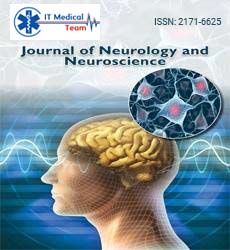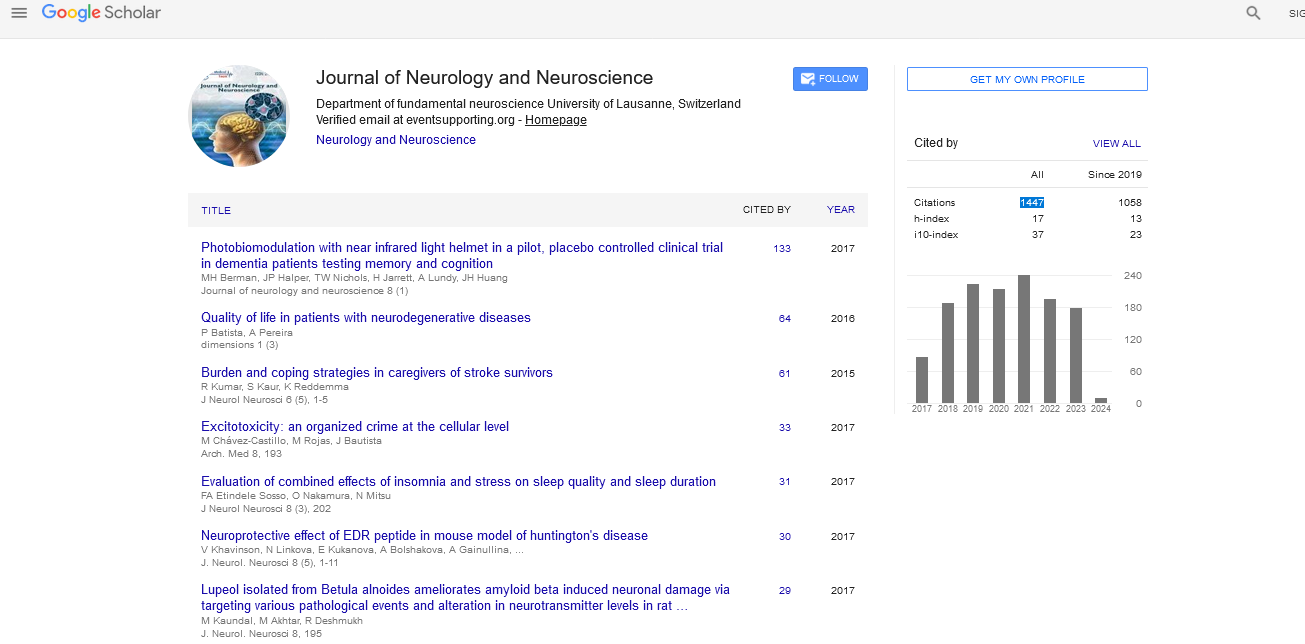Brief Report - (2025) Volume 16, Issue 3
Adjunctive Neuroprotective Therapy in Mechanical Thrombectomy
Anemiilo Gerine*
Department of Neurology, Chonnam National University Medical School, Gwangju, Republic of Korea
*Correspondence:
Anemiilo Gerine, Department of Neurology, Chonnam National University Medical School,
Republic of Korea,
Email:
Received: 27-May-2025, Manuscript No. ipjnn-25-15713;
Editor assigned: 29-May-2025, Pre QC No. P-15713;
Reviewed: 12-Jun-2025, QC No. Q-15713;
Revised: 17-Jun-2025, Manuscript No. R-15713;
Published:
24-Jun-2025
Introduction
Acute Ischemic Stroke (AIS) remains a major global health burden, being one of the leading causes of death and long-term disability. Mechanical Thrombectomy (MT) has revolutionized stroke management by offering rapid reperfusion for patients with Large Vessel Occlusion (LVO), significantly improving clinical outcomes. However, despite timely and successful recanalization, many patients do not achieve favorable neurological recovery, a phenomenon known as the "futile recanalization" or "no-reflow" phenomenon. This has driven increasing interest in adjunctive neuroprotective therapies strategies aimed at preserving neural tissue viability and enhancing functional recovery alongside MT. Neuroprotective therapies, once considered unsuccessful due to failed trials in the pre-thrombectomy era, are now undergoing a resurgence, buoyed by the improved and consistent reperfusion achieved through MT. In this essay, we explore the rationale, mechanisms, current research, and future directions of adjunctive neuroprotective therapy in the context of mechanical thrombectomy [1].
Description
AIS results from the sudden occlusion of a cerebral artery, leading to reduced blood flow and oxygen supply to brain tissue. This initiates a cascade of events including excitotoxicity, oxidative stress, inflammation, and apoptosis. The ischemic core becomes irreversibly damaged within minutes, but the surrounding penumbra may remain viable for hours, making it a prime target for intervention. Reperfusion via MT restores blood flow to ischemic tissue, halting progression of the infarct. However, reperfusion itself can paradoxically cause secondary injury, known as ischemia-reperfusion (I/R) injury. Mechanisms include oxidative stress, mitochondrial dysfunction, Blood-Brain Barrier (BBB) disruption, and leukocyte infiltration. Neuroprotective therapies aim to modulate these processes to maximize neuronal survival [2].
As MT restores flow, the oxidative burst and inflammatory response can exacerbate neuronal damage. Neuroprotection may attenuate this injury. By stabilizing penumbral tissue, neuroprotective agents may prolong the window for effective thrombectomy or improve outcomes in late-presenting patients. Even with recanalization, many patients do not achieve full recovery. Adjunctive neuroprotection may reduce infarct growth and enhance recovery potential. Certain agents may stabilize the BBB and reduce the risk of post-thrombectomy hemorrhage. Neuroprotective therapies may improve micro vascular perfusion and reduce “no-reflow,” a condition where downstream microcirculation fails to reperfuse despite large vessel recanalization. Oxidative stress plays a central role in reperfusion injury. Agents like edaravone, a free radical scavenger, have shown promise in reducing oxidative damage in both preclinical and clinical settings [3].
Although numerous neuroprotective agents have failed in previous stroke trials, the modern era of thrombectomy offers a new landscape for their success. Some notable ongoing or recent trials include: Tested nerinetide (a PSD-95 inhibitor) in patients undergoing MT. Although the primary outcome was not met in the overall population, a subgroup not receiving alteplase showed a significant benefit, suggesting potential interaction with thrombolytics. Investigating the use of edaravone in Asian populations, with mixed but promising results. Examining intra-arterial magnesium sulfate administration during MT. Exploring therapeutic hypothermia post-thrombectomy. Several small trials have shown reduced infarct volumes and improved outcomes with fingolimod, particularly when administered early [4].
Many agents that succeed in animal models fail in human trials due to species differences, comorbidities, and variations in stroke onset-to-treatment time. Neuroprotection is highly time-sensitive. Delays in administration reduce efficacy. The integration of therapy into the MT workflow must be seamless. Stroke etiology, location, collateral status, and patient factors vary widely, complicating trial design and interpretation. Some neuroprotective drugs interact negatively with alteplase or other thrombectomy-related medications. Funding for large-scale trials is challenging due to the historic failure rate of neuroprotective agents.
The next generation of adjunctive therapies will likely focuses on precision neuroprotection, where treatment is tailored to individual patient characteristics using biomarkers and imaging. Potential future approaches include: Using imaging (CT perfusion, MRI) or blood-based markers to select patients most likely to benefit. Combining agents to target multiple pathways simultaneously. Delivering neuroprotective drugs via nanoparticles or targeted carriers to ischemic tissue. Direct infusion of neuroprotective agents during MT may maximize local concentration while minimizing systemic effects. Integrating AI to predict who will benefit most from neuroprotective strategies based on clinical and radiographic data [5].
Conclusion
Adjunctive neuroprotective therapy represents a promising frontier in stroke management, especially in the era of mechanical thrombectomy. While MT has transformed the treatment landscape by restoring blood flow, neuroprotective agents offer the potential to further improve outcomes by minimizing reperfusion injury, preserving penumbral tissue, and enhancing functional recovery. The future of neuroprotection lies in better understanding of stroke pathophysiology, patient stratification, and integration with reperfusion workflows. Ongoing and future trials will clarify the role of these therapies and, hopefully, unlock new avenues to reduce the devastating burden of stroke.
Acknowledgment
None.
Conflict of Interest
None.
References
- Rison RA, Kidd MR, Koch CA. The CARE (Case Report) guidelines and the standardization of case reports. J Med Case Rep. 2013; 7:1-3.
Google Scholar, Cross Ref, Indexed at
- Markey KA, Mollan SP, Jensen RH, et al. Understanding idiopathic intracranial hypertension: Mechanisms, management, and future directions. Lancet Neurol. 2016; 15(1):78-91.
Google Scholar, Cross Ref, Indexed at
- Kim TW, Choung HK, Khwarg SI, et al. Obesity may not be a risk factor for idiopathic intracranial hypertension in Asians. Euro J Neurol. 2008; 15(8):876-879.
Google Scholar, Cross Ref, Indexed at
- Chen J, Wall M. Epidemiology and risk factors for idiopathic intracranial hypertension. International ophthalmology clinics. 2014; 54(1):1-1.
Google Scholar, Cross Ref, Indexed at
- Ziakas PD, Voulgarelis M, Felekouras E, et al. Myelofibrosis-associated massive splenomegaly: A cause of increased intra-abdominal pressure, pulmonary hypertension, and positional dyspnea. Am J Hematol. 2005; 80(2):128-132.
Google Scholar, Cross Ref, Indexed at





